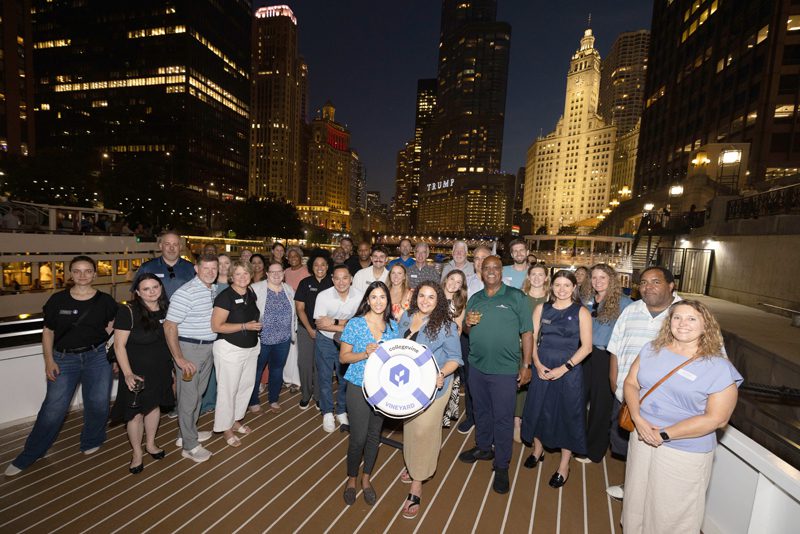- Social and Shopping Converge
Retailers have been using social to successfully engage their customers for some time. Now, many have come to realize social media can mean much more than just relationship marketing.
 2015 saw a host of interesting developments that are allowing brands to bring shopping into the social experience. Facebook Shop Now and Twitter’s Product Pages are making it easier than ever for retailers to activate consumers from within their social streams. Instagram and Pinterest have also both introduced new buying features that are creating new opportunities for marketers.
2015 saw a host of interesting developments that are allowing brands to bring shopping into the social experience. Facebook Shop Now and Twitter’s Product Pages are making it easier than ever for retailers to activate consumers from within their social streams. Instagram and Pinterest have also both introduced new buying features that are creating new opportunities for marketers.
Retailers are also recognizing the power of social for activating fans and customers. In The Pink, a signature Lilly Pulitzer retailer with ten locations in New England, ran a campaign encouraging customers to record short videos of themselves to share via their own social networks. The campaign, supported by mobile video ad platform Vivoom, generated an average spend of $200 per customer.
As brands and retailers look for ways to reach customers in a saturated media market – and in the face of ad blocking technology – connecting creatively though social channels will be an increasingly important approach.
- Tech Buys In To Traditional Media
2015 saw major changes in the ways media is produced and consumed. Yes, this could probably have been said about every year since the Web went live, but 2015 offered some stand out examples. Jeff Bezos’ acquisition of the Washington Post was an early harbinger of the trend. With cash on their balance sheets, tech players are looking to use traditional media in new ways.
Apple and companies like AOL, Yahoo, and Google recognize the value of TV audiences and are actively seeking ways to get a piece of the action. Examples include content production, the introduction or improvement of new media devices, and partnerships that can help bring consumer and tech brands together. Google, for example, is working with Sony to have Android TV built into the entire Sony television lineup.
The streaming TV revolution has accelerated this trend. AOL and Yahoo are now creating original content, with Yahoo picking up and extending Community – now a hit but which was previously cancelled by NBC. The biggest news and potential wildcard is the rebirth of Apple TV, which the company promises will be “The Future of TV.” A sign of how seriously Amazon is taking its place in the content delivery market is the company’s decision to stop selling streaming devices from either Apple or Google.
At the same time, the entertainment industry will continue to seek ways to capitalize on second screening to increase engagement with audiences and provide more meaningful ways for brands to reach consumers. Will 2016 be the year all of the pieces fall into place?
- Publishing Reimagined
There’s no doubt that 2016 will see the continuation of the revolution in publishing. When Facebook opened the spigot with outbound links to publishers, the number quickly grew from 62 million to 161 million. Two years ago, Facebook and Google were about equal when it came to sending clicks to the BuzzFeed network of sites, which receive more than 200 million unique visitors per month. Today, thanks to its more aggressive Instant Articles approach, Facebook sends 3.5X more traffic to BuzzFeed than Google.
It isn’t just millennial-focused publishers that are seeing a benefit. The New York Times receives 15% of its traffic from Facebook, a number that has doubled over the past year. Now that Instant Articles is live for all iOS users (it’s also currently being tested on Android in India), that figure could skyrocket. This would be a welcome development for the Times (and other publishers) in the face of declining site traffic and the rise of ad blocking but it comes with a risk. Rather than owning the relationship with its readers, the Times has become dependent on the social giant. A role reversal indeed.
There has been ongoing speculation about whether Facebook will open Instant Articles to brands. If it does, it means we’ll see an increase in native advertising in our News feeds. If it doesn’t, we’ll still see an increase in advertising via sponsored posts by publishers who have signed agreements with Facebook.
In 2015 we saw developments that lay the foundation for even bigger changes in 2016. Social shopping, tech players becoming leaders in traditional media and the large platform players rewriting the rules of publishing are just three of the things to pay attention to during the coming year.
Michael Aaron Flicker is the founder and president of XenoPsi.
Related Articles:
4 Things Marketers Must Do Better in 2016
Better Email Marketing in The New Year: 5 Tips
The Key to Smoother Marketing Technology Implementations


 Network
Network

